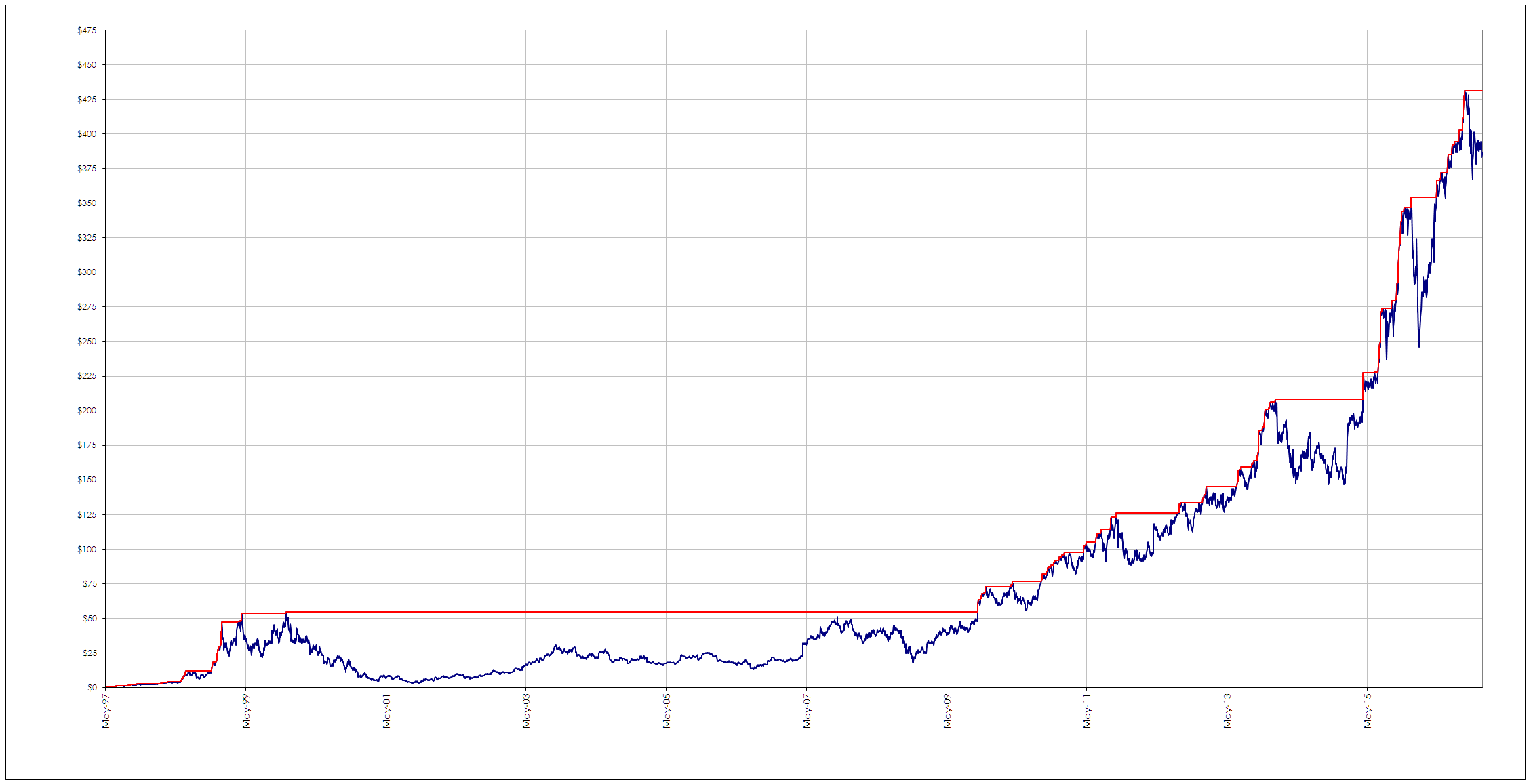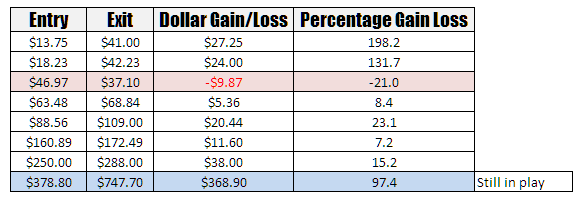I came across this piece the other day. It is a good bit of work because it highlights neatly the interplay between returns, risk and drawdown. This triumvirate holds sway over the trajectory of our investing but it is continually ignored by most, as all traders in some way shape or form seek the biggest bang for their buck. The article looks purchasing AMZN from the perspective of a buy and hold investor and it would have been truly stomach churning experience – I can only think of one person who would have done that and it is Jeff Bezos the founder. I thought I would redo one of the charts from the article so the scale was a little clearer.
The chart below looks at the value of $1 invested in AMZN.
What I want to highlight is the decade long wilderness between 1999 and 2009 before the stock makes a new high – this is a very long time between drinks. It is a given that simple risk mitigation procedures such as having a stop ameliorate some of the problems generating by buying and holding and for simple curiosity I thought I would look at how having a simple 52/26 week entry and exit signal would perform. The rules are simple you enter on a 52 week high and sell on a 26 week low. To put this idea under a bit of stress I made the conditions for entry and exit disadvantageous by requiring the buy to be at the high following and the exit to be the low of the following week. The system not surprisingly only generated a few trades and they are as follows –
You will note that I have only looked at absolute dollar and percentage gains based upon purchasing a single share. So it not a truly exhaustive systems test by any stretch of the imagination. What did surprise me was that it only generated a single loss and that the stock has had a near triple digit gain whilst quite mature. The old adage price is irrelevant holds true.
There are probably two points to be gleaned from this. Tales of survivor bias that you hear from buy and hold investors do not reflect the true story because for every AMZN there are probably another ten that at best go nowhere or at worst simply disappear. This is particularly true for stocks that made their first appearance during the Dot Com bubble. And simple ideas work surprisingly well.








